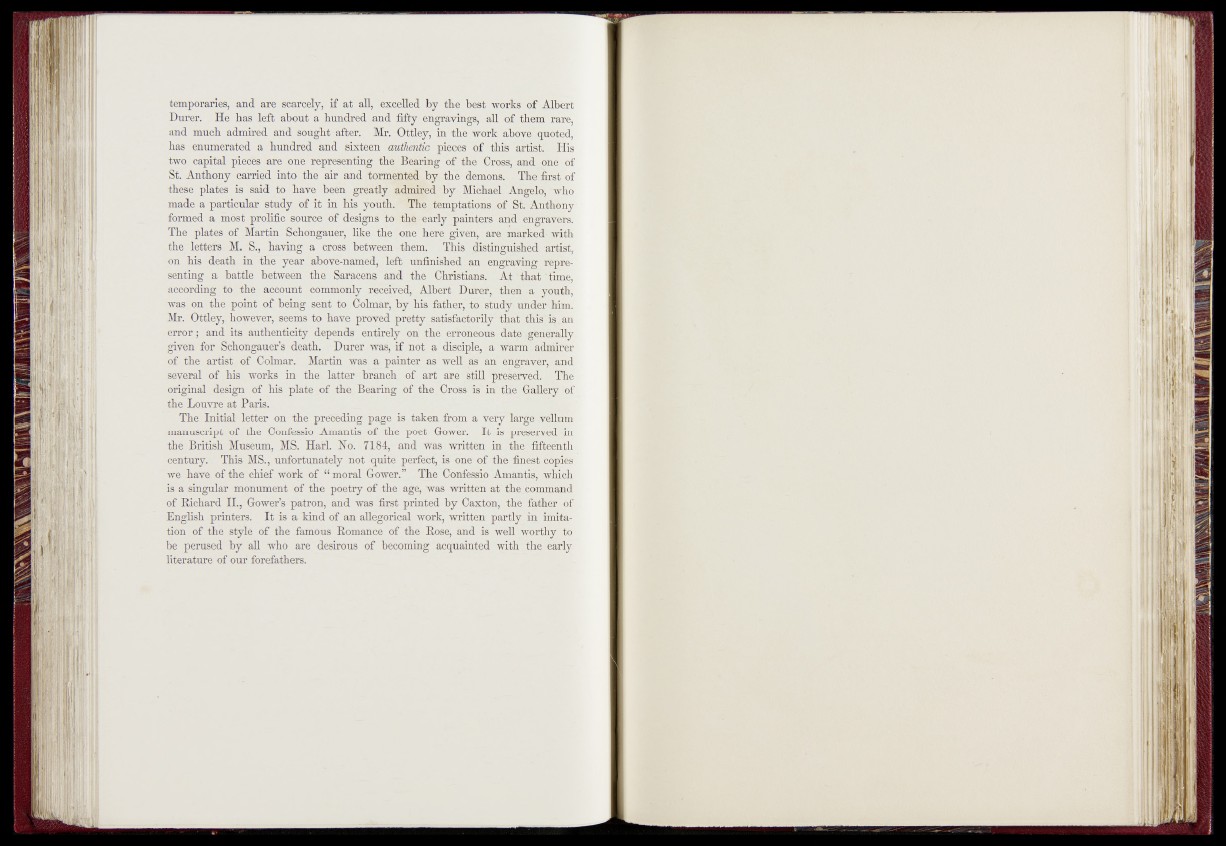
temporaries, and are scarcely, if at all, excelled by the best works fjeM^lbert
Durer. He has left about a hundred and fifty engravings, all of them rjare,
and much admired and sought-after. Mr,1 Ottley,' in the work above quoted,
has enumerated a hundred and sixteen authentic pieces of this artist. His
two capital pieces are one representing the Bearing of the ,Cross, and one’ of
St. Anthony carried into the air and tormented by the demons. first of
these plates is said to have been greatly admired by Michael Angelo; 'who
made a particular, study of it ift Ms' youth. vThe temptations of St. Anthony
formed a most prolific source of designs to the early painters an<f engravers.
The plates of Martin Schongauer, like the one hère given, are. marked-with
the letters M. ;S., having a cross between-them. This «distinguished artist,
on his death in the year above-named, left unfinished an engraving -^presenting
a battle between the Saracens and the Christians. At 'that 'tune,
according to the account commonly received, Albert D u r e r a ijfeÉlh,
was on the point of being sent to Colmar, by his father," tpT study uhderihim.
Mr. Ottiey,. however, seems to have proved pretty satisfactorily that t£V& an
error; and its authenticity depends entirely on the erroneous d^âtâ.generally,
given for Schongauer’s death. Durer -was, if not a disciple, - a iwjrih ^admirer
of the artist of Colmar. Martin was a painter as wefl^as ah' enMaverj-;and
sèyeral of his works in the latter branch of art are still IprèsêrVçd. AF$e
original design of his plate of the. Bearing of the Cross-is in’ d&^Gfdleiy
the Louvre at Paris.
The Initial letter on the preceding page is taken from a vicryllarge .ÿefflnV
manuscript of the Confessio Amantis of the poet Gower. -Itris pfesérvéd^-in,
the British Museum, MS. HarL Ho. 7184, and was written in the ‘fifteenth
century. This MS., unfortunately not quite perfect, is one^ofAhe- finest .çèfies
we have of the chief work of Amoral Gower,” The Confessio "Amantis, which
is a singular monument of the poetry of the age, was written àt'-theicommand
of Richard IL, Gower’s patron, and was first printed by Caxton, the father of
English printers. It is a kind of an allegorical work, written partly in imitation
of the style of the famous Romance of the Rose, and is well worthy to
be perused by all who are desirous of becoming'acquainted with ; the early
literature of our forefathers.